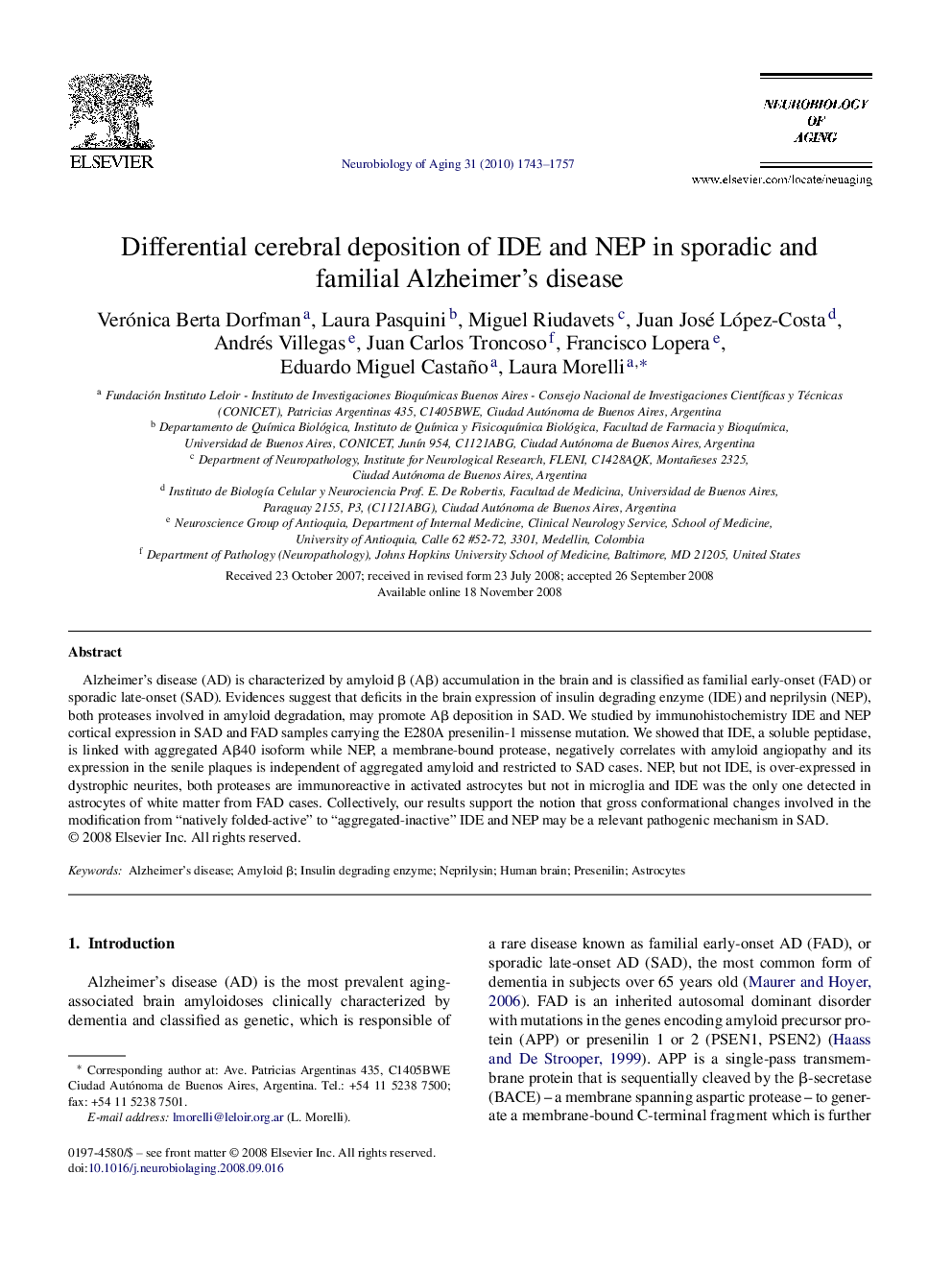| Article ID | Journal | Published Year | Pages | File Type |
|---|---|---|---|---|
| 328658 | Neurobiology of Aging | 2010 | 15 Pages |
Alzheimer's disease (AD) is characterized by amyloid β (Aβ) accumulation in the brain and is classified as familial early-onset (FAD) or sporadic late-onset (SAD). Evidences suggest that deficits in the brain expression of insulin degrading enzyme (IDE) and neprilysin (NEP), both proteases involved in amyloid degradation, may promote Aβ deposition in SAD. We studied by immunohistochemistry IDE and NEP cortical expression in SAD and FAD samples carrying the E280A presenilin-1 missense mutation. We showed that IDE, a soluble peptidase, is linked with aggregated Aβ40 isoform while NEP, a membrane-bound protease, negatively correlates with amyloid angiopathy and its expression in the senile plaques is independent of aggregated amyloid and restricted to SAD cases. NEP, but not IDE, is over-expressed in dystrophic neurites, both proteases are immunoreactive in activated astrocytes but not in microglia and IDE was the only one detected in astrocytes of white matter from FAD cases. Collectively, our results support the notion that gross conformational changes involved in the modification from “natively folded-active” to “aggregated-inactive” IDE and NEP may be a relevant pathogenic mechanism in SAD.
